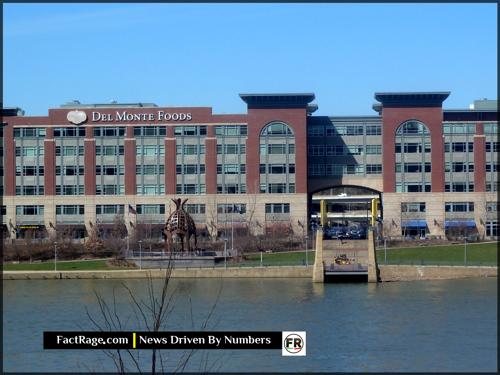WALNUT CREEK, CA – Del Monte Foods, Inc., a brand that has been a staple in American pantries for more than a century, filed for Chapter 11 bankruptcy protection today, signaling a potential end for one of the country’s most recognizable food producers.
- The Bankruptcy Filing – Del Monte Foods is seeking to restructure more than $1.2 billion in debt, citing plummeting sales, high operational costs, and intense competition.
- Shifting Consumer Tastes – The company’s decline reflects a decades-long trend of American consumers moving away from canned goods in favor of fresh, frozen, and less-processed options.
- Community Impact – The filing places the future of thousands of employees and generational farming partners in jeopardy, particularly in agricultural hubs in California, the Midwest, and elsewhere.
The announcement confirms years of speculation about the financial health of the food giant, raising fundamental questions about the role of legacy brands in the modern grocery store and the future of the communities that were built to serve them.
What’s Behind the Collapse of a Food Giant?

The story of Del Monte Pacific Limited’s American subsidiary is a story about the changing American kitchen. Founded in the 1880s, Del Monte grew with the country, becoming synonymous with reliable, shelf-stable fruits and vegetables. For generations, its iconic red shield logo promised consistency from coast to coast. At its peak, the company was an agricultural and industrial powerhouse, operating dozens of canneries and providing a crucial market for farmers across the nation.
However, the very foundation of its success—canned goods—has become a liability. Financial filings point to a cascade of challenges. The rise of private-label store brands from retailers like Walmart and Kroger has eaten into market share, offering similar products at lower prices. Simultaneously, consumer preferences have shifted dramatically. Health-conscious shoppers now often perceive canned products as over-processed and high in sodium, gravitating instead toward the fresh produce and frozen food aisles. This seismic shift left Del Monte struggling to adapt a business model built for a different era.
A Story Told in Debt and Declining Sales
The Chapter 11 filing was not a sudden event but the culmination of a long, slow decline. After being taken private in a leveraged buyout in 2011, the company was saddled with significant debt. Efforts to innovate with new product lines in pouches or fresh-cut produce were often too little, too late to counteract the core business’s erosion.
According to market analysis, sales of shelf-stable canned vegetables have declined by nearly 15% over the past decade, while the fresh and frozen categories have seen steady growth. Del Monte’s revenue charts reflect this trend, showing a consistent downturn that accelerated in the post-pandemic economy as supply chain costs soared and inflation squeezed household budgets, making cheaper store brands more attractive. The company’s leadership cited these “insurmountable economic headwinds” as the primary driver for seeking bankruptcy protection, which will allow it to renegotiate its debts and potentially restructure for survival.
What Happens to the Company Towns?
Beyond the corporate headquarters, the bankruptcy filing sends a shockwave through the small and mid-sized towns that form the backbone of Del Monte’s operations. In places like Hanford, California; Sleepy Eye, Minnesota; and Markesan, Wisconsin, Del Monte isn’t just an employer; it’s a multi-generational institution. For decades, these communities have revolved around the seasonal rhythms of the harvest and the cannery whistle.
The company contracts with thousands of acres of farmland, and the bankruptcy puts these long-standing agricultural partnerships at risk. Farmers who have grown specific varieties of peaches, tomatoes, and green beans exclusively for Del Monte now face an uncertain future. The potential closure of canneries threatens not just direct employees but the entire local economic ecosystem, from equipment suppliers to seasonal workers. The central question now is whether Del Monte can successfully restructure and emerge from bankruptcy, or if its iconic label will become another relic of 20th-century American industry.









